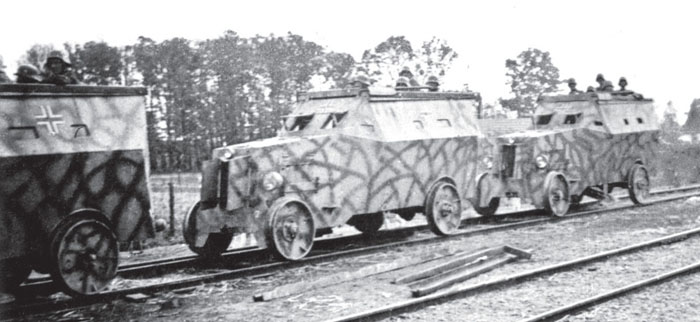
The Independent State of Croatia,1 initially a monarchy, later a republic, was created following the break-up of Yugoslavia in 1941.
Armoured trains (oklopni vlak) were envisaged for anti-partisan operations from the very start. In September 1941 an improvised armoured train operated on the stretch of line between Maglaj and Doboj, and it remained in service up until December in the Tuzla region, assisting with the encirclement of the partisans in the Orzen Mountains.
The Slavonski Brod railway centre specialised in the repair and construction of armoured trains and trolleys, of which twenty were ordered in April 1942. At the same time, an 800-man Railway Battalion was formed. The armoured trains would not become an independent arm of service but were attached to and formed part of infantry regiments, each being designated a half-company to undertake this specialist role.
In November 1942 the Croatian trains came under the tactical control of the Wehrmacht, and records for 1943 indicate the existence of seven or eight armoured trains, grouped into five Armoured Train Companies (Satnija Oklopljenih Vlakova Nos 1-5). Each train was composed of several armoured wagons and of one or two static Renault FT tanks (armed with a 37mm gun), carried on three-plank wagons. A mortar, two heavy and four light machine guns made up the rest of the armament. In all, 364 officers and men, a mixture of Croats and Germans, commanded and crewed the trains.
At the time of writing details of the exact makeup of each train, specifying the type of wagon, are not available. Equally it has not been possible to correlate the known numbering and naming of individual trains.2 Although we know that armoured trains were built for both standard gauge and narrow gauge, it is sometimes difficult to differentiate between them in photos. The sole indicator is that narrow-gauge armoured trains used central automatic couplings, whereas the standard-gauge units were fitted with buffers and screw link couplings.
A rough indication of the trains’ geographical distribution is as follows:
– 1st Company: HQ at Doboj at the time it was formed in 1942; by September 1944 it was based at Slavonski Brod.
– 2nd Company: Created in 1942, by 1943 it operated to the north and east of Zagreb with Armoured Trains Nos 1 and 2.
– 3rd Company: Created in 1942, operating in the III Corps zone in Bosnia-Herzegovina with Armoured Trains Ris, Vuk and Lisac.
– 4th Company: No details at the time of writing.
– 5th Company: Formed in late 1943, operating in the Karlovac region with two armoured trains, then in 1944 on the Karlovac-Zagreb-Ozalj-Recica line.
Finally, two improvised armoured trains bearing the numbers 412 and 432 operated during 1941 in Bosnia-Herzogevina.3 Because of the through connections of the different railway networks, several of these trains also operated in Greece, and perhaps as far away as Italy, where Croatian-type armoured wagons were photographed.

Armoured trolleys built at Slavonski Brod on the chassis of Steyr 1500 trucks.
(Photo: Wolfgang Sawodny)
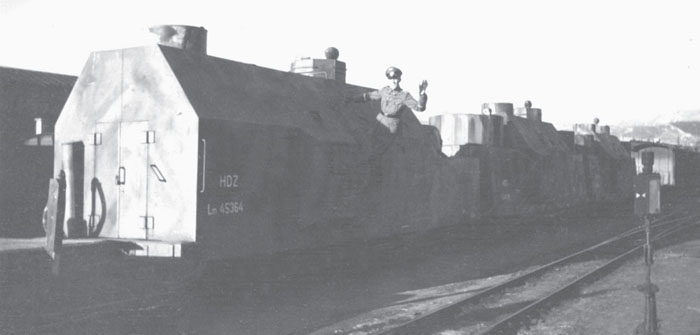
Narrow-gauge armoured train with a mixed German-Croat crew. The initials HDŽ stand for Hrvatske Državne Želejnice or Croatian State Railways.
(Photo: Paul Malmassari Collection)
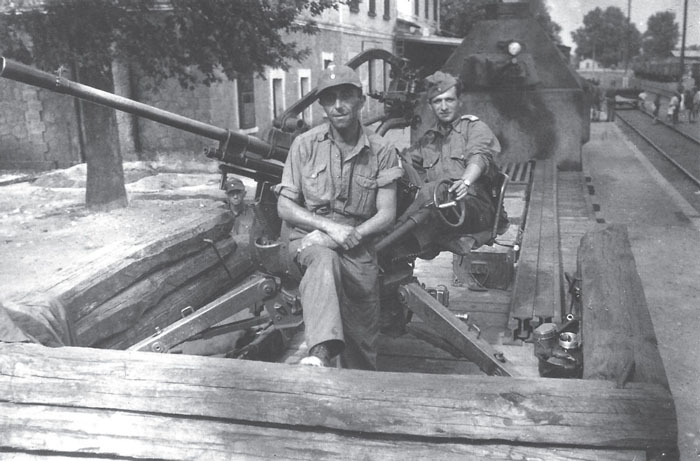
Protection improvised from sleepers on a pilot truck armed with an Italian 20mm Breda Model 35 cannon, seen in Katerini Station in Greece.
(Photo: Paul Malmassari Collection)
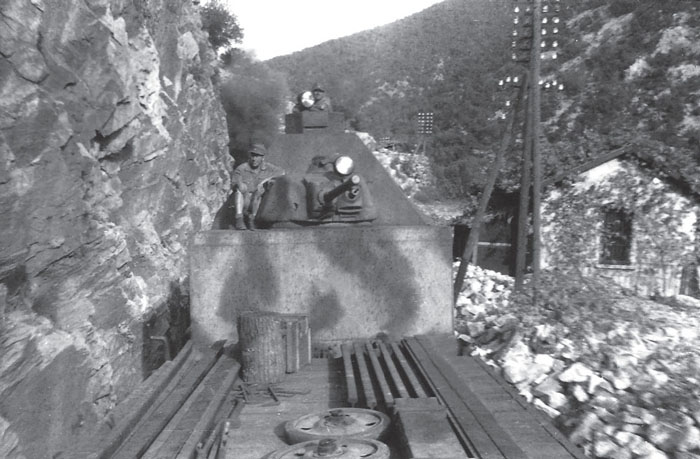
The same train on patrol in Greece, seen here in Tembi in 1943. The turret is an APX from a French tank, in original condition without the opening top hatches usually fitted by the Germans.
(Photo: Paul Malmassari Collection)
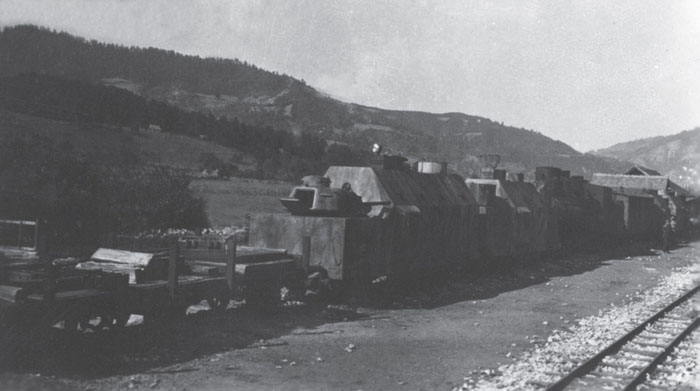
On the left, a standard-gauge armoured train, and on the right, a narrow-gauge track.
(Photo: Paul Malmassari Collection)
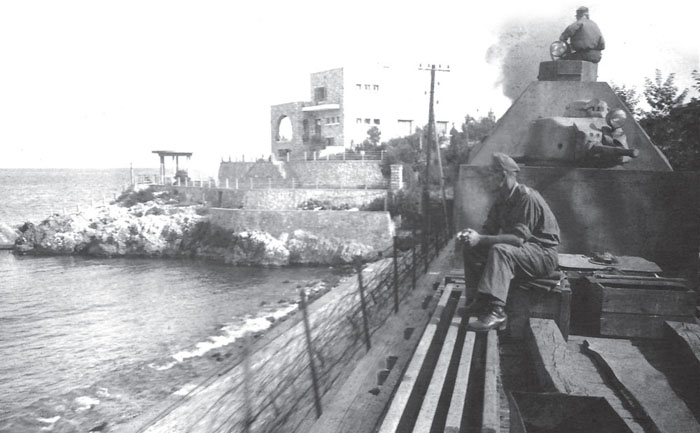
Running along the coast at Palatamon in Greece.
(Photo: Paul Malmassari Collection)
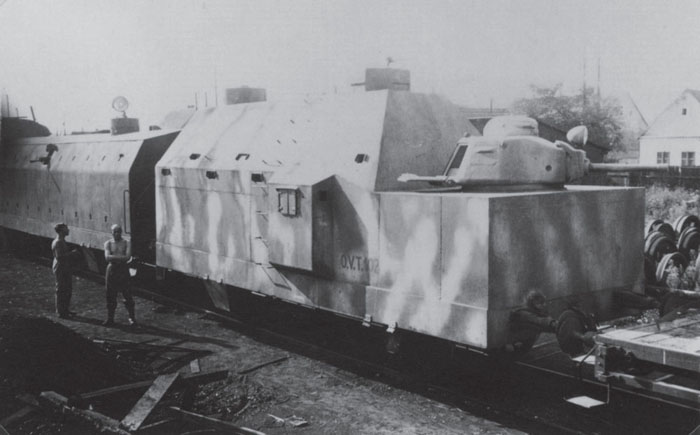
A fine view of a standard-gauge wagon, with an APX turret.
(Photo: Paul Malmassari Collection)
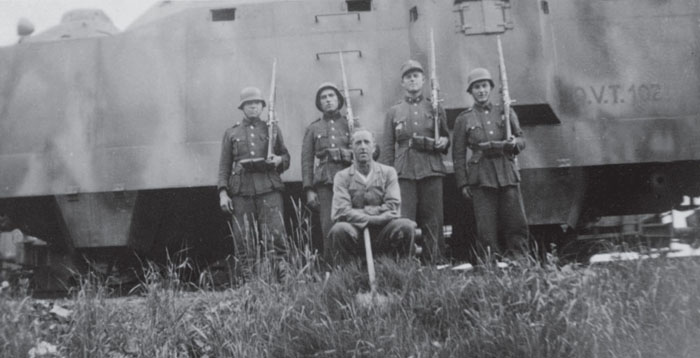
The same wagon photographed from the opposite side, showing the offset position of the lookout. The inscription ‘O.V.T.102’ may be the wagon’s number.
(Photo: Paul Malmassari Collection)
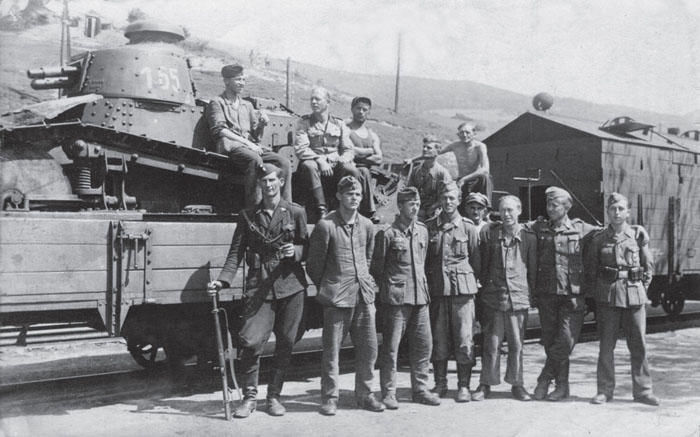
German and Croatian soldiers pose for the camera in front of an armoured train.
(Photo: Paul Malmassari Collection)
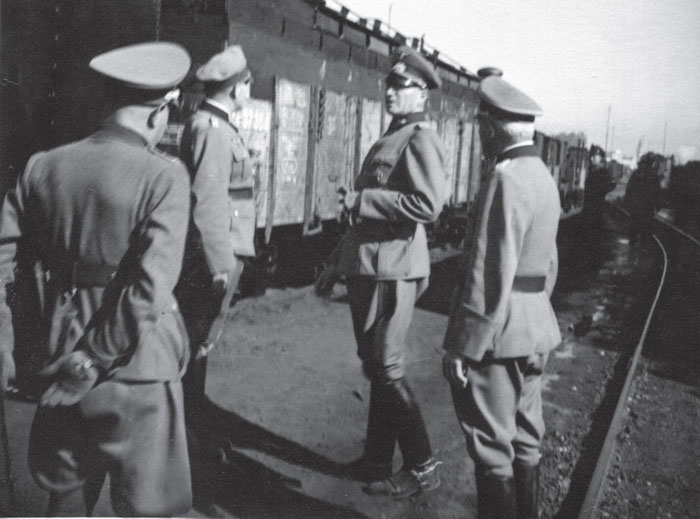
Major-General Johann Fortner (1884–1947), commander of the 718th Infantry Division from May 1941 to March 1943, seen in front of an armoured wagon.
(Photo: Paul Malmassari Collection)
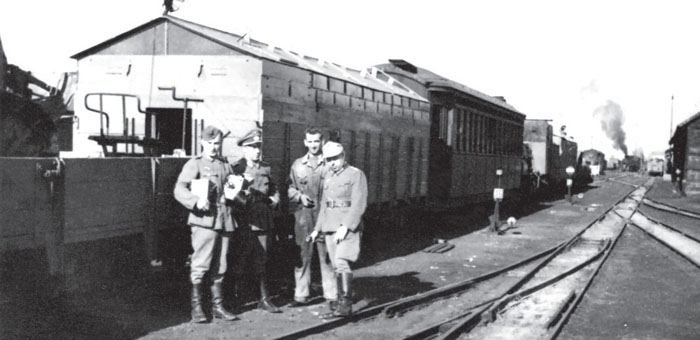
A more distant view of the same wagon, showing the arrangement of firing loopholes. In the centre of the train is the armoured engine.
(Photo: Paul Malmassari Collection)
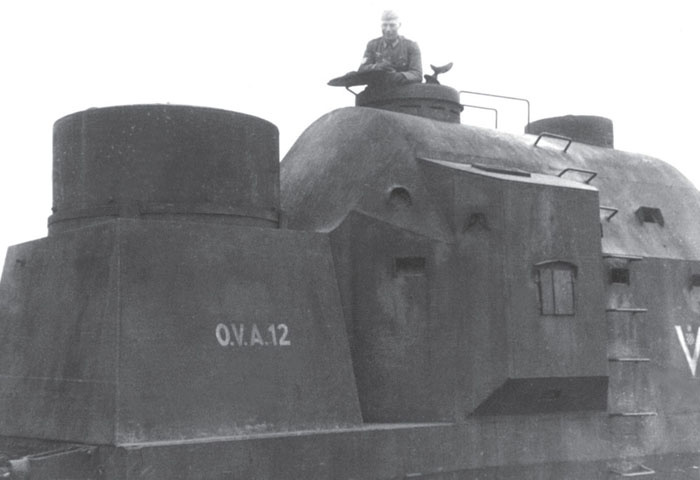
An armoured wagon of an unidentified armoured train. The wagon’s origins are obscure; is it an old Austro-Hungarian armoured wagon modified in the inter-war period, or a more recent model? The Croatian coat of arms can be seen on the right. The inscription ‘O.V.A.12’ may be its serial number.
(Photo: Paul Malmassari Collection)
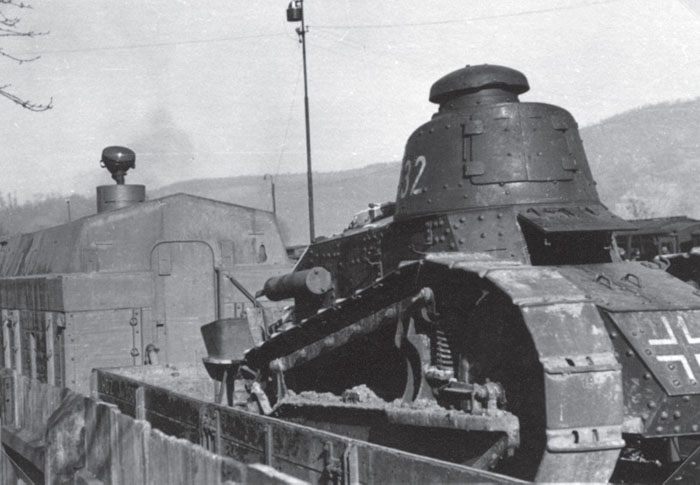
The artillery element of the trains in the Balkans and in Italy was usually furnished by the 37mm guns of Renault FT tanks on three-plank wagons.
(Photo: Paul Malmassari Collection)
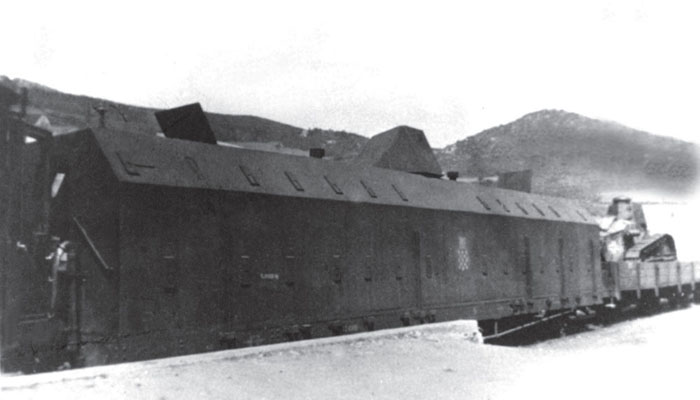
A different type of armoured wagon attached behind an FT Tank three-plank wagon, clearly showing the Croatian coat of arms.
(Photo: Paul Malmassari Collection)
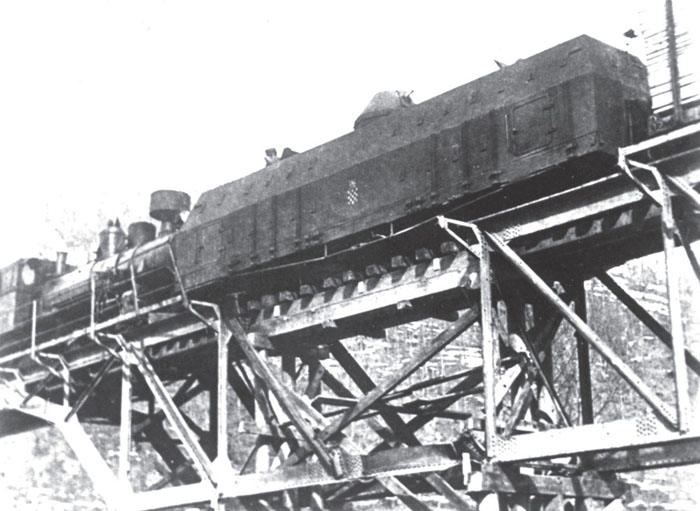
Another view of the same train.
(Photo: Bojan Dimitrijevic)
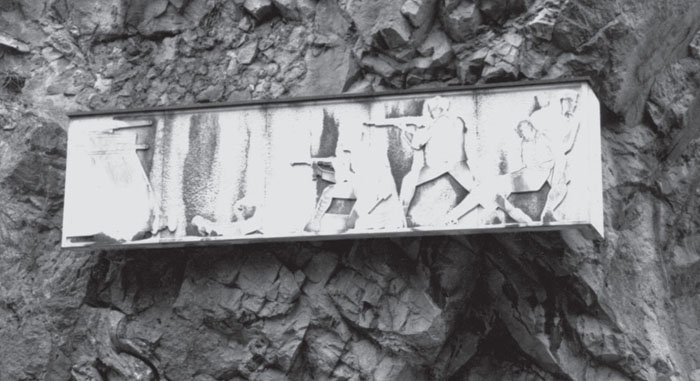
Beside the road from Sarajevo to Vareš is a plaque commemorating the heroism of the partisans who appear to have attacked an armoured train in 1941.
(Photo: Paul Malmassari Collection)
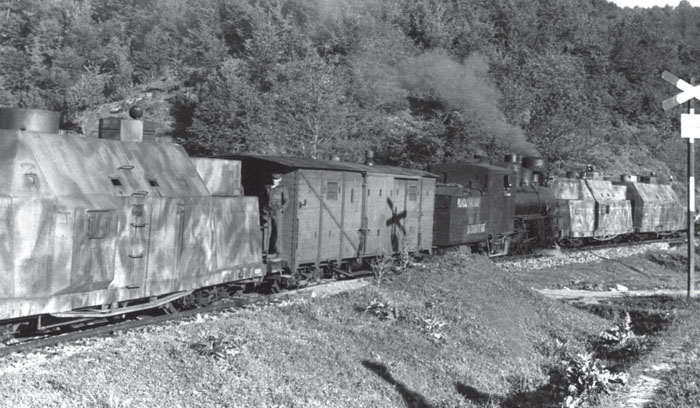
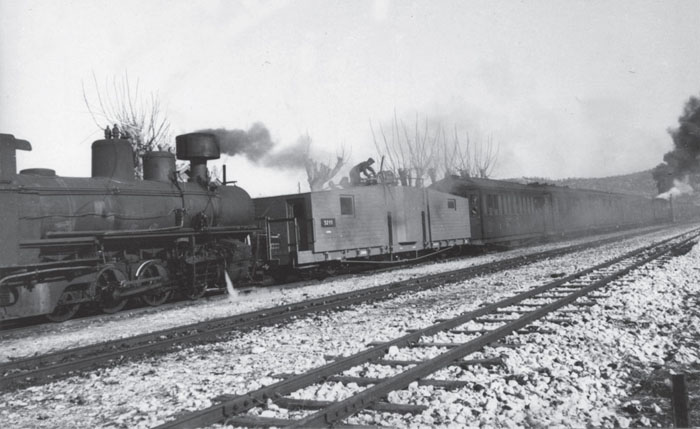
Two interesting views of typical Croatian armoured trains, with their different types of wagon and the engine with only the driving cab being armoured.
(Photos: Bundesarchiv – BA)
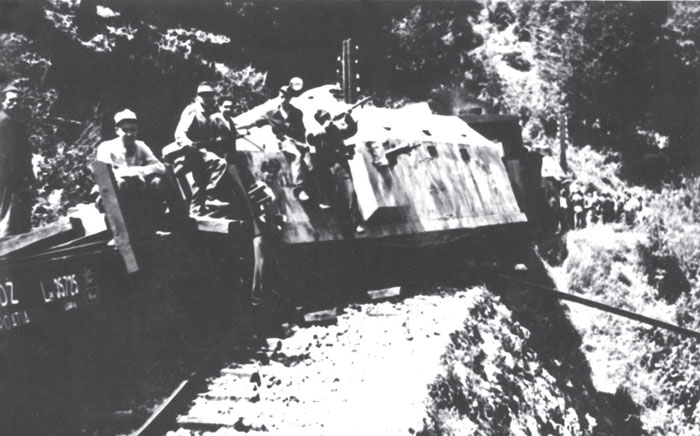
Armoured train derailed by partisans on 4 August 1943.
(Photo: Yugoslav Railway Museum)
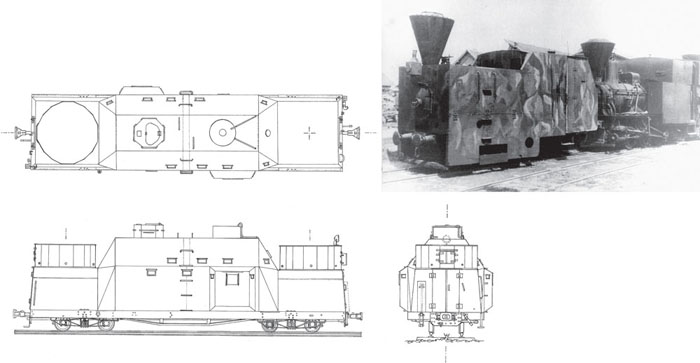
A narrow-gauge armoured engine as captured at the end of the war. Note the second engine which is only partially armoured.
(Photo: Bojan Dimitrijevic)
SOURCES:
Dimitrijevic, Bojan and Savic, Dragan, German Panzers and Allied Armour in Yugoslavia in World War Two (Erlangen: Verlag Jochen Vollert – Tankograd Publishing, 2013).
Article by H.L. deZeng IV, on the website http://www.axishistory.com.
DGEG Archives/ W. Sawodny Collection. Author’s archive.
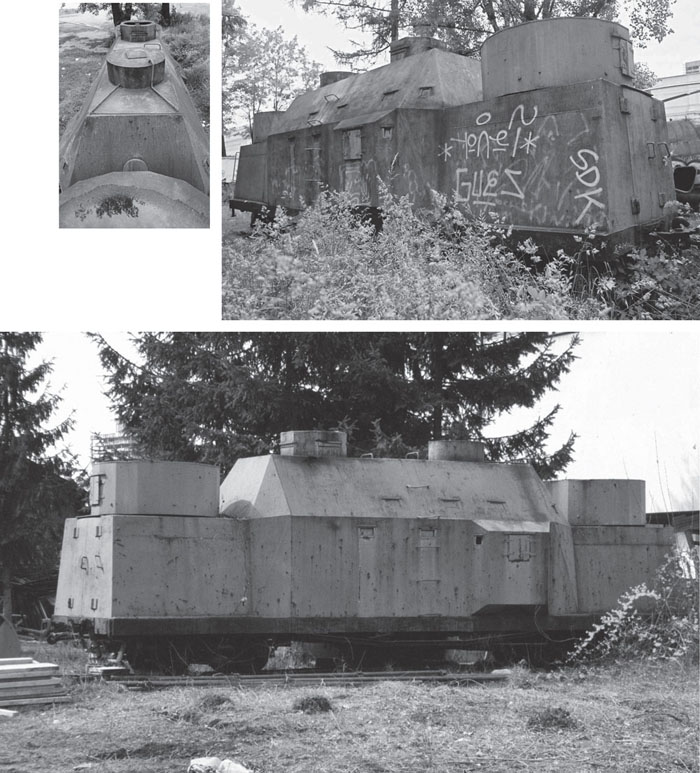
Three photos of the narrow-gauge Croatian armoured wagon preserved in the Museum of the Revolution in Sarajevo, as seen in 2006.
(Photos: Paul Malmassari Collection)
1. Nezavisna Država Hrvatska or NDH (August 1941–May 1945).
2. Thus we find several trains bearing the same number but serving under different commands, and the following designations, which are either the name of the station where the train was based, or the name of an animal: Lisac (No 3), Ris, Gabela, Lašva, Neretva, Travnik, Vareš, Vuk (No 2) and Zenica.
3. It is possible that an attack on one of these trains is commemorated by the plaque beside the Sarajevo-Vareš road, since no report mentions the presence of a German armoured train during the period mentioned on the plaque.